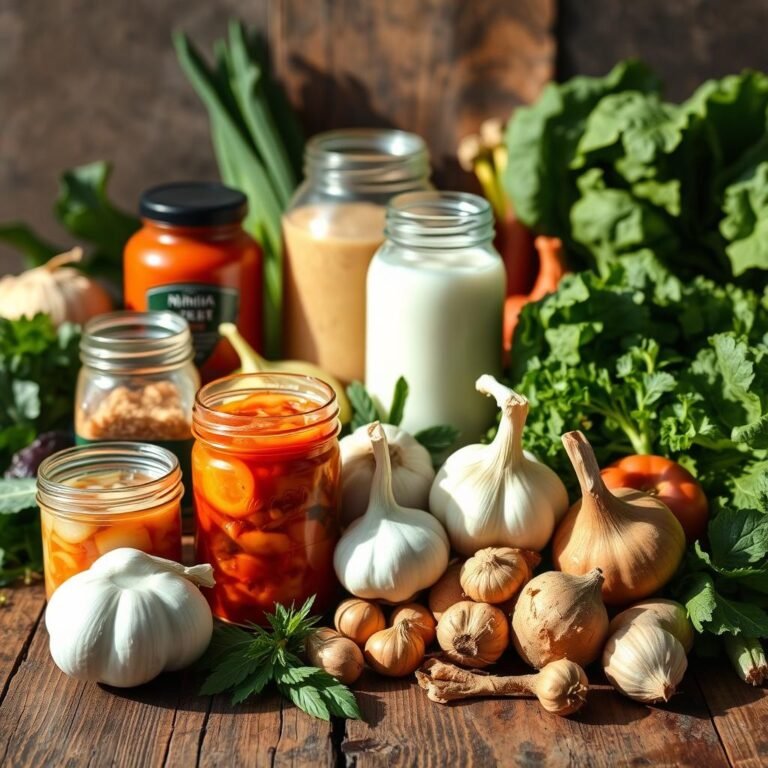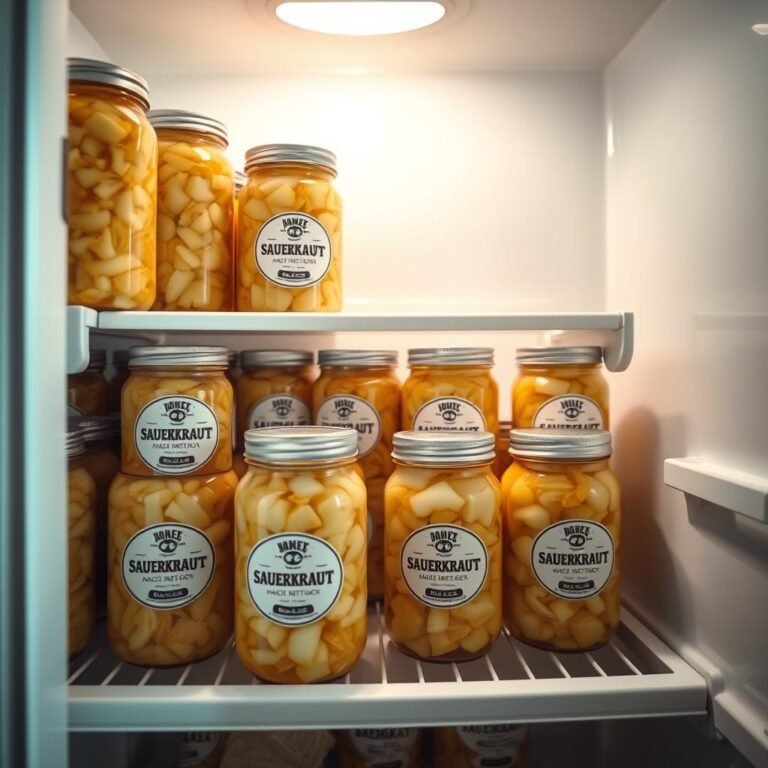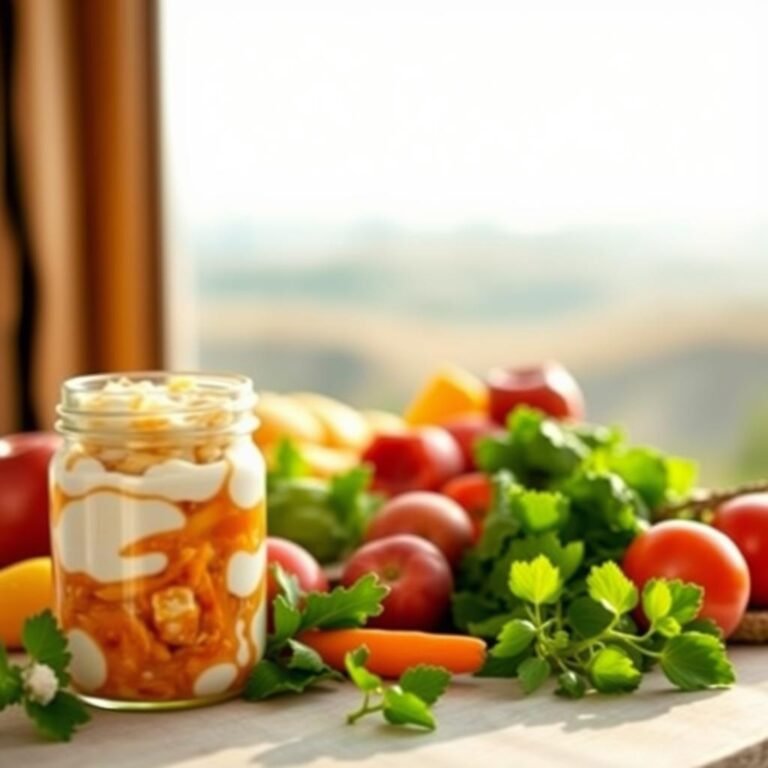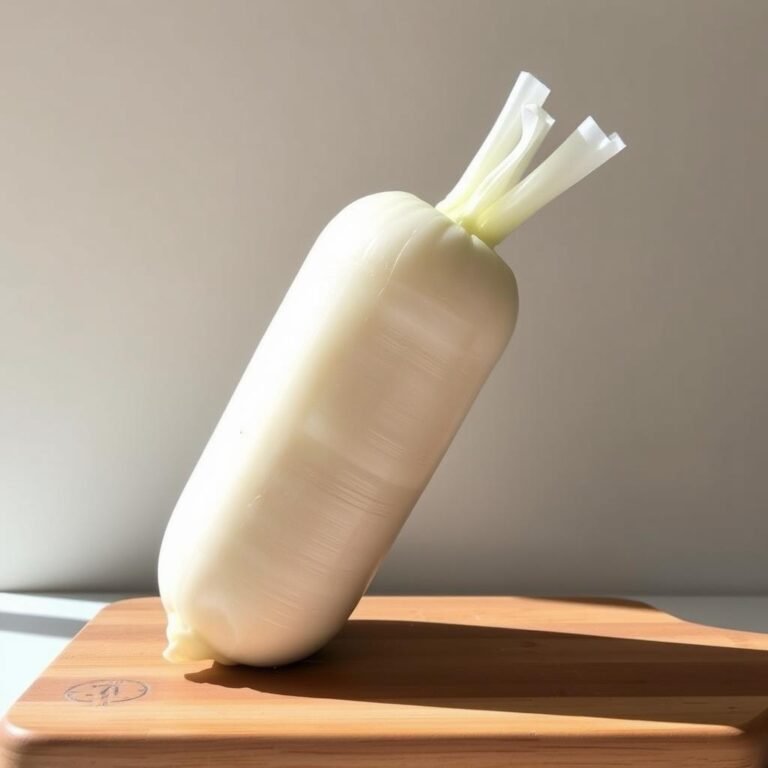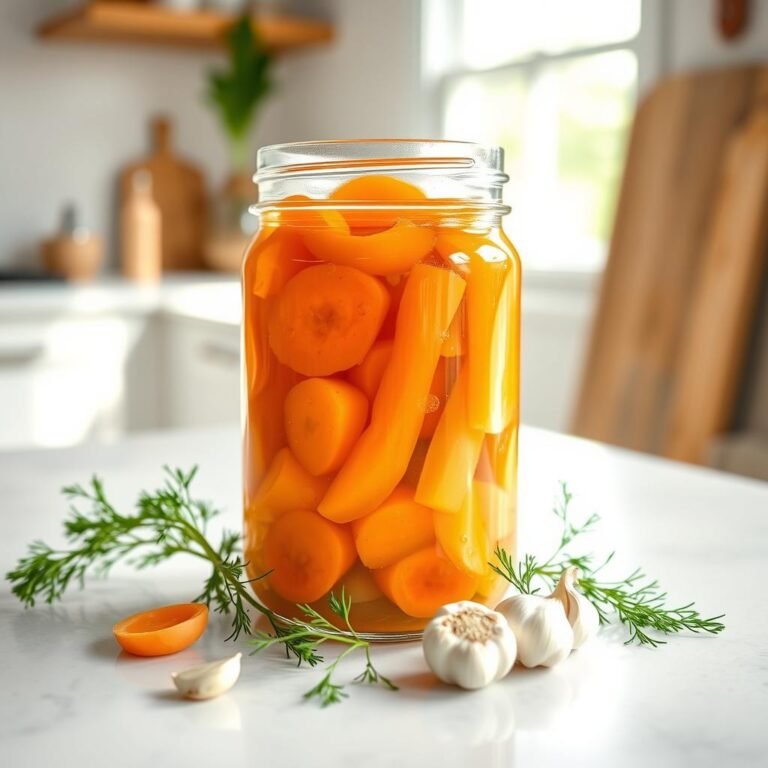How to Make Cauliflower Kimchi as Homemade Probiotic
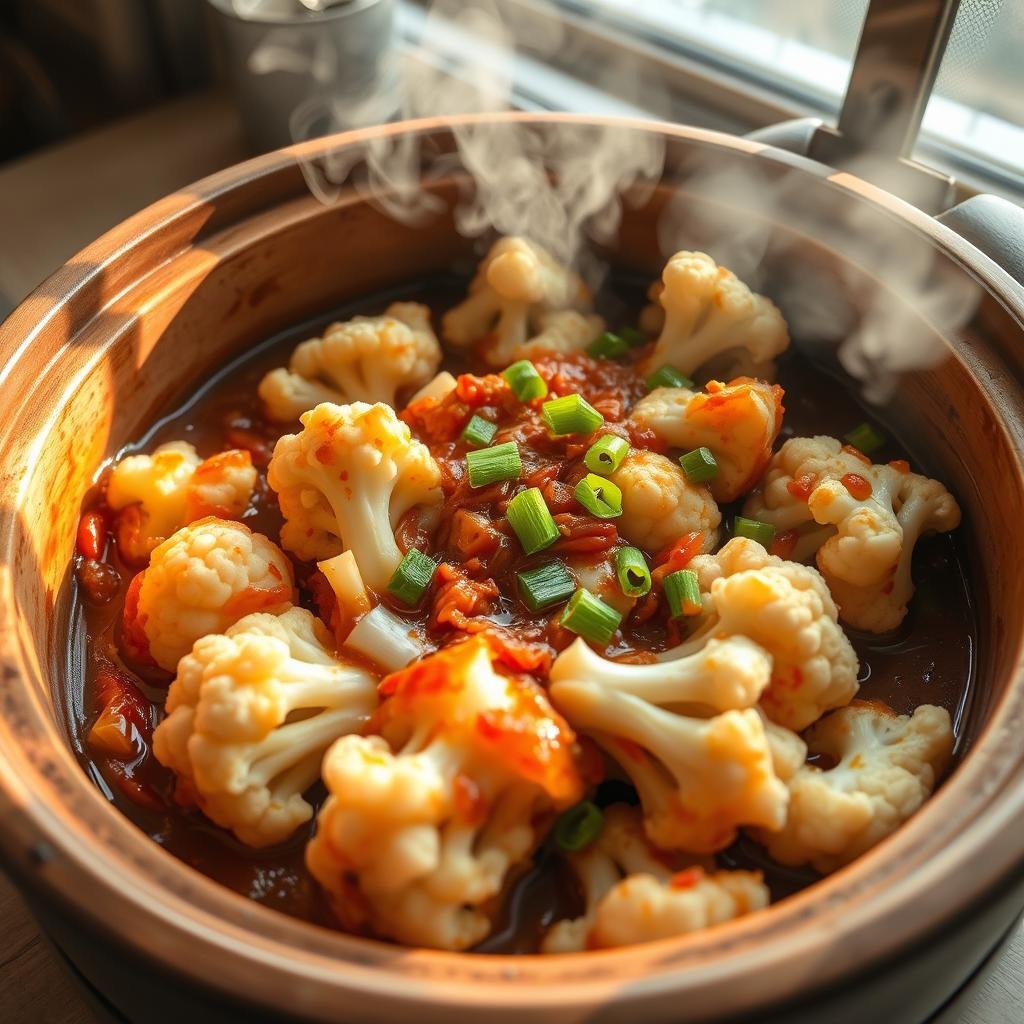
Learn how to make cauliflower kimchi, a tasty homemade probiotic. It’s full of flavors and good for your health. It uses hijiki seaweed, apples, and pears for a fresh twist.
This kimchi is not just tasty. It’s also good for your gut and immune system. It’s packed with prebiotics, probiotics, and postbiotics.
Want to know more about cauliflower kimchi’s benefits and how to make it? Check out this article for more. It will help you improve your cooking skills and boost your gut health.
What is Cauliflower Kimchi?
Cauliflower kimchi is a tasty and healthy choice instead of traditional napa cabbage kimchi. It uses cauliflower as the main ingredient. This kimchi is crunchier than napa cabbage kimchi, with a spicier flavor.
Cauliflower kimchi is packed with health benefits. It’s full of vitamins, minerals, and antioxidants from cauliflower. These help keep you healthy and improve digestion.
It also has lots of probiotics, like kimchi lactobacillus. These are good for your gut. Brands like Wildbrine make probiotic-rich kimchi for better health.
So, adding fermented cauliflower kimchi to your meals is good for you. It makes food taste better and helps you stay healthy.
Essential Ingredients for Cauliflower Kimchi
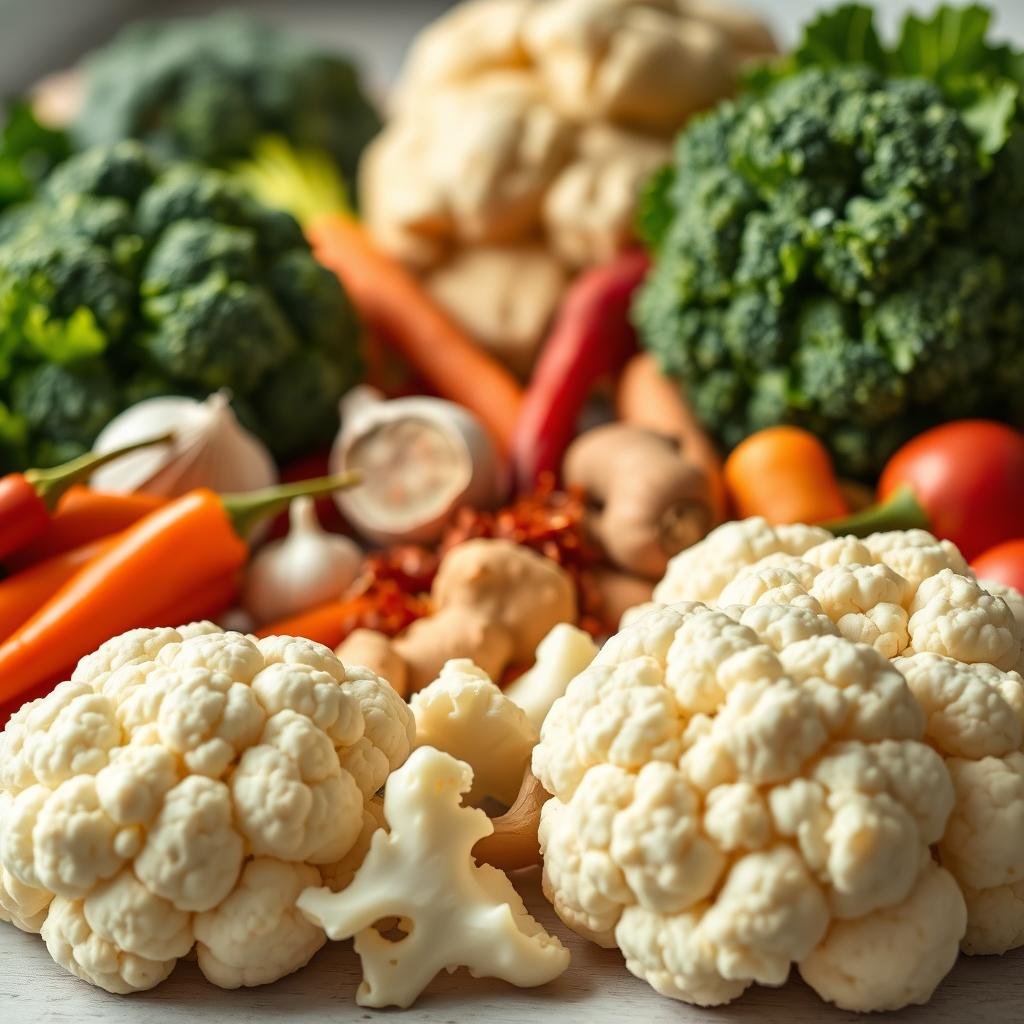
To make delicious cauliflower kimchi, start with fresh cauliflower and veggies. Organic produce is best for quality and taste. It makes the dish rich in probiotics.
Fresh cauliflower is key for a crunchy texture and nutty flavor. Onions, garlic, and fruits like apples and pears add sweetness and depth. Fresh ingredients are vital for the best nutritional benefits.
Korean red pepper flakes, or Gochugaru, are a must. They bring heat and a bright red color. This mix of flavors is tasty and packed with probiotics from fermentation.
Use the whole cauliflower, including leaves, for a sustainable approach. Find a detailed recipe and guide on Tom’s Feast.
Spices and seasonings are also important. Garlic, onions, and hijiki seaweed boost taste and nutrition. A sprinkle of sesame seeds adds extra flavor.
This mix of cauliflower, veggies, and spices creates a balanced dish. Enjoy a healthy and sustainable meal full of probiotics and lactobacillus.
Preparing Your Cauliflower for Kimchi
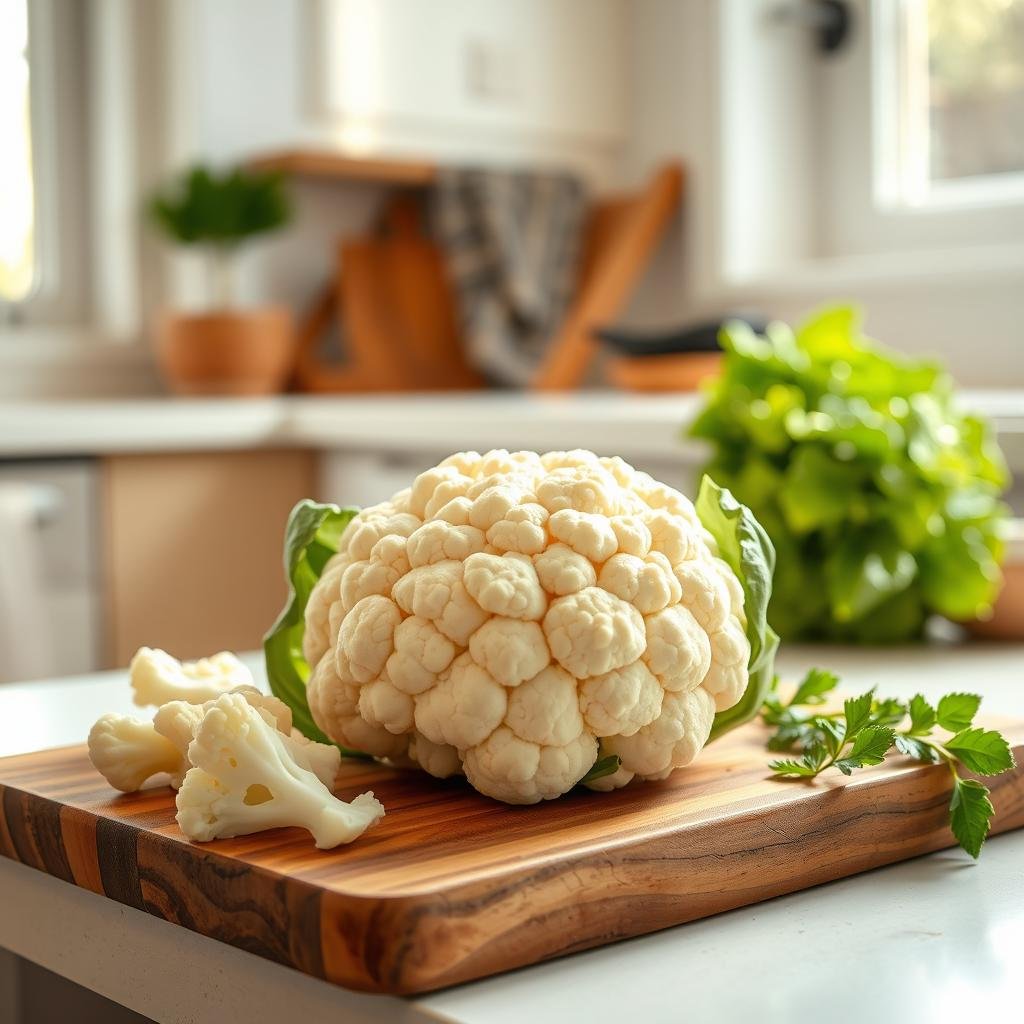
Before you start making kimchi, washing and cutting the cauliflower is key. First, rinse the cauliflower under cold water to get rid of dirt. Then, dry it and cut it into small, even pieces.
This careful cutting helps the cauliflower ferment evenly. It makes your homemade probiotic taste better.
Next, sprinkle salt over the cauliflower. This step makes the cauliflower crisper and helps it ferment better. It also makes the cauliflower a nutrient-rich treat.
Want to try something new? Check out this recipe for kimchi cauliflower rice. It’s a tasty way to use your cauliflower kimchi.
Creating the Kimchi Paste
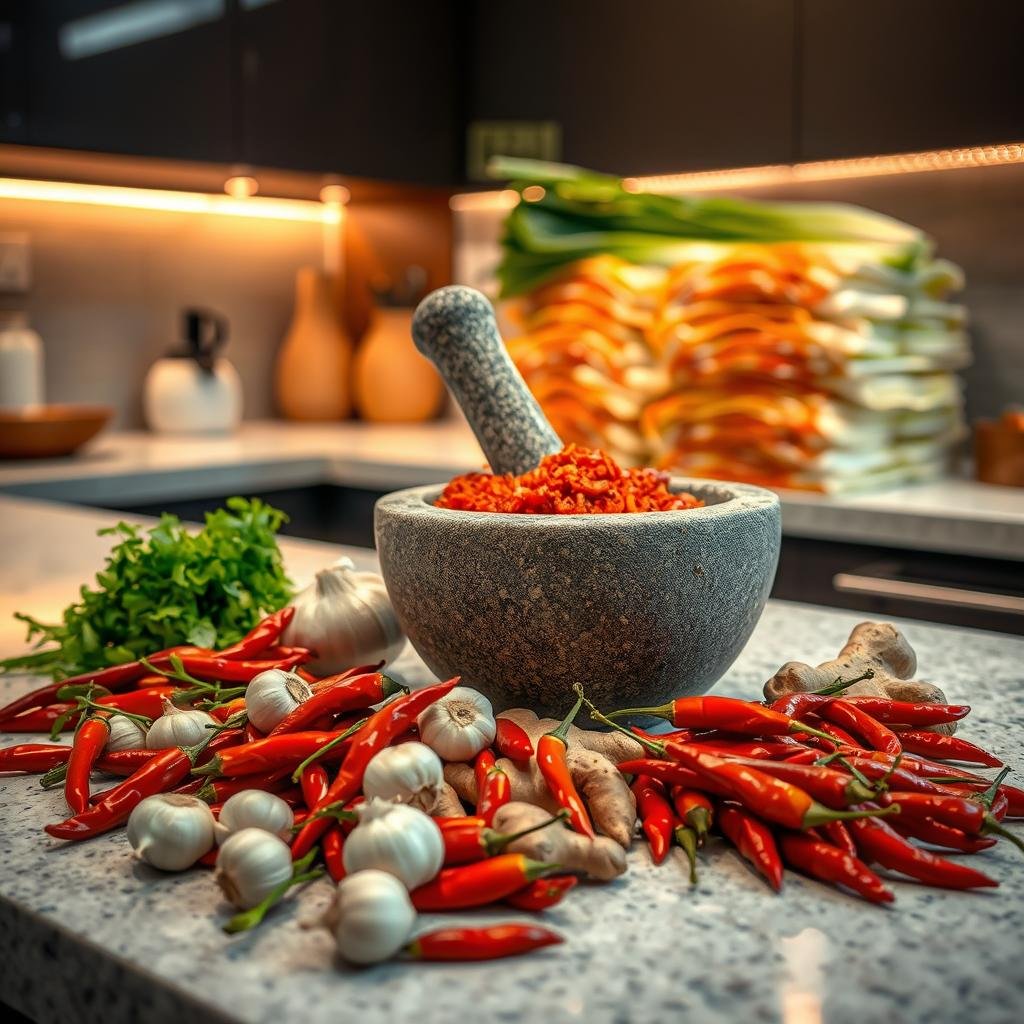
To make the perfect kimchi paste, you need to mix spices and seasonings just right. Start by blending 8 cloves of garlic, 1 chopped onion, 1 quartered apple, and 1 quartered pear. Add 4 tablespoons of Korean chili powder and 120ml of water.
This mix gives your paste a great flavor. Blend until it’s smooth. This makes sure everything mixes well. Adding a pinch of hijiki seaweed can make it even better, adding a special taste.
After making the paste, mix it well with your cauliflower and other veggies. This is key for even flavor and good fermentation. The right mix of spices makes each bite full of flavor.
| Ingredients | Amount |
|---|---|
| Garlic cloves | 8, peeled |
| Onion | 1, roughly chopped |
| Apple | 1, quartered |
| Pear | 1, quartered |
| Korean chili powder | 4 tablespoons, or to taste |
| Water | 120ml |
| Hijiki seaweed | Pinch |
Learning to mix spices and seasonings well can make your homemade kimchi amazing. It will be full of healthy probiotics and delicious flavors.
Fermenting Cauliflower Kimchi
Fermenting cauliflower kimchi is an art that needs precision and patience. The right container is key to success. Cauliflower kimchi is often packed in oak barrels or glass jars. This creates the best environment for flavor development.
The fermentation time can vary, but it’s usually a few weeks at room temperature. Beginners should keep containers at room temperature for at least a week. As fermentation goes on, flavors get deeper and richer. Many suggest fermenting for up to a month for the best taste.
Choosing the right container and following the right timelines are important. This process not only preserves the vegetables but also enhances their nutritional value. It also brings out the tangy and spicy flavors that kimchi is known for. Make sure all ingredients are fully covered in the kimchi paste to prevent spoilage and ensure even fermentation.
For more on preparing and using vegetable scraps in kimchi, see this detailed guide. It uses cauliflower leaves and other often discarded parts.
How to Use Cauliflower Kimchi in Meals
Adding kimchi in meals boosts flavor and health. A great choice is using kimchi in fried rice. It’s tasty, easy to make, and full of probiotics.
Cauliflower kimchi is also great with broths and stews. Its fermented taste adds a tangy kick to soups. You can also mix it with grilled chicken or salmon for a spicy twist.
Kimchi can turn simple meals into gourmet dishes. It’s perfect as a side or a main ingredient. Its bold flavor and health perks make it essential in every kitchen.
- Ingredients:
- 1 tsp coconut or avocado oil
- 2 large green onions
- 2 cloves garlic
- ½ inch ginger root
- ⅓ cup carrot
- 4 cups cauliflower rice
- ½ cup kimchi
- ⅓ cup frozen peas
- 3 large eggs
- 1½ Tbsp low-sodium soy sauce
- Preparation time:
- Prep Time: 5 minutes
- Cook Time: 10 minutes
- Servings: 2 people
For more detailed instructions, visit this link. Discover how easy and delightful it is to add kimchi in meals today!
Troubleshooting Common Kimchi Issues
Making cauliflower kimchi at home can be rewarding, but sometimes, things go wrong. A common worry is what to do if it smells off. If your kimchi smells like sulfur or vinegar, it’s okay. This smell is normal during fermentation. But, if it smells bad and putrid, it’s spoiled. You should throw it away and start over.
Another problem is when vegetables get too soft. This can mess up the kimchi’s texture. It might be because of how long it fermented, the salt, the temperature, or the veggies. To fix it, try changing the veggies or adjusting how you ferment it. For more help, check out this resource.
Also, watch out for a white film called “Kahm yeast” on your kimchi. It’s not harmful but can change the taste and texture. If your brine gets cloudy or you see bubbles, it means it’s fermenting. But, if you see color changes or mold, it’s best to throw it away and start again.
